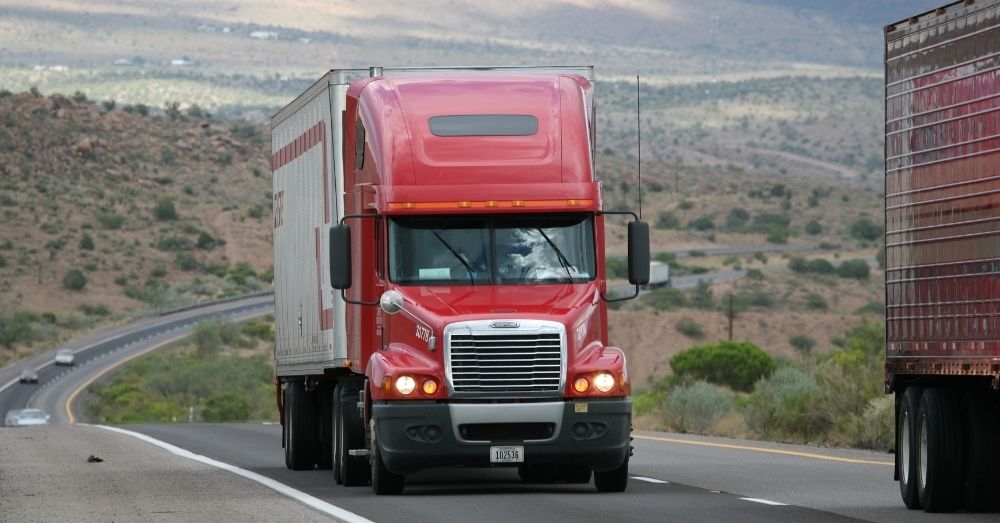Table of Contents
Key Takeaways
✔ HOS regulations ensure truck drivers operate safely by limiting driving hours and requiring proper rest to prevent fatigue.
✔ A truck driver can typically cover 500 to 600 miles per day depending on traffic, terrain, and driving conditions, which answers the question of how many miles do truckers drive a day under normal operating limits.
✔ Truck drivers often face delays caused by weather, road construction, deadheading, geography, and oversize load restrictions.
✔ Truck driving can be stressful due to long hours, strict schedules, traffic challenges, and time spent away from home.
When someone sees big trucks moving across the country, they might wonder, how many hours can a truck driver drive in a day? It’s a question that matters to drivers, businesses, and even warehouse teams trying to plan deliveries.
Truck driving might seem like endless miles of open road, but it’s actually a job with very specific limits. The Federal Motor Carrier Safety Administration (FMCSA) created Hours-of-Service (HOS) regulations to make sure truckers stay alert and safe.
These limits affect every part of the transportation industry. For companies operating in warehousing NYC, understanding these driving rules helps with scheduling shipments and keeping goods moving efficiently in one of the busiest areas in the country.

Hours-of-Service (HOS) Regulations Overview
The FMCSA’s Hours-of-Service regulations define how long truckers can drive and when they must rest. The main goal is to prevent fatigue and keep highways safe.
These rules apply to property-carrying drivers, who move freight across short or long distances. By following HOS limits, companies can protect drivers’ health and avoid violations that lead to costly fines or delays.
Property-Carrying Drivers: How Many Hours Can a Truck Driver Drive in a Day
11-Hour Driving Limit
Truck drivers can drive up to 11 hours after taking 10 consecutive hours off duty. That means if a driver starts work at 7 a.m., they must stop driving no later than 6 p.m., depending on breaks. This rule defines how long can a truck driver drive under federal safety regulations and ensures they stay alert and avoid pushing beyond safe limits.
14-Hour Limit
Once a driver starts their day, the clock begins ticking. They cannot drive beyond 14 consecutive hours after going on duty, even if they take breaks. Off-duty time doesn’t extend this limit. This rule helps drivers keep their days consistent and predictable.
30-Minute Driving Break
After 8 hours of driving, every driver must take at least a 30-minute break. The break can include time off-duty or other non-driving tasks. This short pause helps drivers refocus before finishing their route.
60/70-Hour Limit
Truckers can’t drive after being on duty for 60 hours in 7 days or 70 hours in 8 days. To reset, they must take at least 34 consecutive hours off. This rule also helps manage how long can a truck driver drive, ensuring they have enough time to rest and recover before getting back on the road.
Sleeper Berth Provision
Drivers can split their 10-hour rest period into two parts. One part must include at least 7 consecutive hours in the sleeper berth, and the other at least 2 hours off-duty. Together, they must total 10 hours. This rule gives drivers flexibility while keeping them compliant.
Adverse Driving Conditions
If a driver faces unexpected challenges, like snow, fog, or accidents, they can extend their 11-hour driving limit and 14-hour window by up to 2 hours. This helps truckers reach a safe stopping point instead of rushing.
Short-Haul Exception
Drivers who stay within a 150 air-mile radius of their starting location don’t have to keep detailed driving logs. They just need to return to their base within 14 hours. This rule often applies to local deliveries and operations tied to warehousing in NYC, where multiple short trips are made daily.

How Many Miles Can a Truck Driver Drive in a Day?
On average, long-haul drivers cover 500 to 600 miles a day. If a trucker drives for 11 hours at an average of 55 mph, they’ll reach about 605 miles. But city routes, mountains, or weather can quickly reduce that number.
In areas like NYC, traffic congestion and tight delivery schedules mean drivers usually cover fewer miles. Meanwhile, open highways in the Midwest or western states allow steady travel and higher daily mileage.
Warehousing NYC By Best follows all federal driving regulations to ensure every shipment stays compliant, safe, and efficient. By adhering to Hours-of-Service rules and smart routing practices, they help maintain timely deliveries while keeping driver safety a top priority.
When someone asks how many miles do truckers drive a day, it’s not about pushing limits; it’s about balancing safe driving with on-time deliveries. Truckers focus on making steady progress while following HOS rules and avoiding fatigue.

What Delays Truck Drivers?
Even with perfect planning, truck drivers face challenges that can cut into their available driving hours. From traffic to weather, many factors can slow them down and affect how many miles a truck driver can drive in a day.
Weather
Bad weather is one of the top causes of trucking delays. Rain, fog, snow, or ice can reduce visibility and make roads dangerous. Drivers heading to warehousing NYC often face unpredictable conditions, especially during winter. Weather delays count against a driver’s available time, so dispatchers must plan for these interruptions.
Road Construction
Roadwork and detours can cause long waits that still count toward a driver’s time limit. Construction is especially common during warmer months in northern states. Clear communication about route changes helps drivers stay efficient and avoid losing valuable hours sitting in traffic.
Empty Miles / Deadheading
Sometimes, drivers must travel without a load to reach their next pickup. This is called deadheading. It still counts toward their driving hours but doesn’t move any freight. Shippers can help reduce this by offering flexible scheduling or allowing drivers to overnight onsite, saving time and cutting wasted miles.
Geography
A trucker’s location also affects how far they can go. In big cities or on the East Coast, drivers deal with tighter roads and heavier traffic. Out west, wide-open highways make it easier to travel long distances. These differences explain why one driver may travel 300 miles while another covers 600 on the same day.
Over-Dimensional Cargo
Oversized loads move under stricter regulations. They often can’t travel on weekends or after dark and may need escort vehicles. Routes are limited, which slows the trip down. Even if drivers have available hours, these restrictions significantly affect how many miles do truckers drive a day, making oversize hauls take longer than standard freight.
Is Truck Driving Considered a High-Stress Profession?
Truck driving can be both rewarding and demanding. Drivers experience long days, strict schedules, and time away from home. The job requires focus, patience, and strong mental endurance.
Those working in busy areas like warehousing NYC face additional challenges: tight delivery windows, constant traffic, and limited parking. These factors can increase stress levels, especially when drivers are racing against their HOS clocks.
Still, many companies are improving conditions through better rest schedules, safety technology, and driver support programs. Knowing how long can a truck driver drive helps both drivers and employers manage time more effectively and reduce stress on the job.
What Is a Conestoga Trailer?
A Conestoga trailer is a type of flatbed equipped with a retractable rolling tarp system mounted on tracks. The tarp can slide open from either end, offering the same easy loading and unloading access as a flatbed Conestoga—but with the added benefit of complete weather and damage protection.
What Is the Difference Between a Flatbed and a Conestoga Trailer?
While both are open-deck trailers, the key difference lies in protection and convenience.
A flatbed leaves freight exposed to weather and debris, requiring tarps to cover the load. A Conestoga trailer, however, uses an integrated sliding tarp system that provides full coverage without manual tarping.
Frequently Asked Questions
Some drivers do, especially those on local or regional routes. Long-haul drivers usually travel different routes depending on freight demand.
Company drivers don’t pay for fuel since employers cover that cost. Owner-operators buy their own fuel and often use discounts or fuel cards.
No, drivers must park in safe, approved areas like rest stops or truck stops. Many use sleeper berths in their trucks for comfort and safety.
Some have weekends off, especially local drivers. Long-haul drivers often work through weekends to meet delivery schedules.
They haul many types of goods like food, furniture, and machinery. Specialized freight such as refrigerated or oversized loads requires extra training.
Enhance Supply Chain Efficiency with Expert Warehousing Solutions in New York City!
Maximize logistics performance with dependable storage, handling, and distribution services across New York, NY. From managing port arrivals to organizing last-mile deliveries, Warehousing NYC by Best ensures smooth coordination between ports, carriers, and retail operations. Each facility is strategically located in New York City to reduce transit times and support faster order fulfillment. Discover reliable, secure, and scalable warehouse support built for the pace of New York City logistics.
Get in touch today to discuss customized warehousing and logistics solutions.

